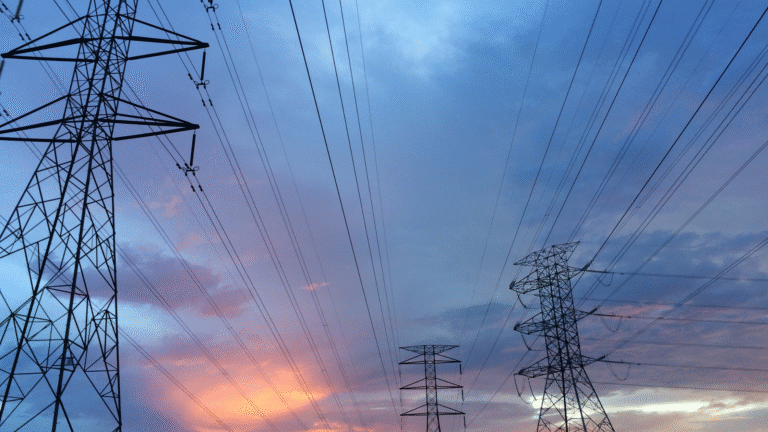As electric vehicle (EV) adoption accelerates across Australia, questions are being raised about the impact on the nation’s electricity grid. Can our infrastructure handle a surge in EV charging? Will EVs strain supply during peak hours, or could they actually help balance demand?
In this article, we explore how EV adoption is reshaping Australia’s energy grid, what challenges lie ahead, and the opportunities that smart charging and renewable energy integration offer.
—
Table of Contents
- The Growth of EV Adoption in Australia
- How EVs Impact Grid Demand
- Peak Demand vs. Off-Peak Charging
- Challenges for the Australian Grid
- Opportunities: Smart Charging and Grid Stability
- Role of Renewables and Distributed Energy Resources (DERs)
- FAQs
- Conclusion
—
1. The Growth of EV Adoption in Australia
EV adoption in Australia is rising rapidly. As of 2025, electric vehicles make up over 10% of new car sales, with projections estimating over 1 million EVs on Australian roads by 2030.
Key drivers include:
- Federal EV incentives and rebates
- State-level charging infrastructure investments
- Expanding model availability from global and local automakers
- Rising fuel prices and lower EV running costs
⚡ With each new EV, the demand on Australia’s electricity network changes—especially when it comes to charging behaviours.
—
2. How EVs Impact Grid Demand
Unlike traditional fuel-powered cars, EVs rely entirely on the power grid. Charging one EV may use 10–20 kWh per session—roughly the same as running a household air conditioner for 8–10 hours.
Cumulative EV charging can significantly affect local and national grids, especially if:
- Large numbers of EVs charge simultaneously (e.g. after work hours)
- Charging happens during peak demand periods (typically 5–9 PM)
- Grid infrastructure (particularly in suburban areas) hasn’t been upgraded
🛠️ Example:
If 100,000 EVs charged simultaneously during peak evening hours, this could draw over 1,000 MW—about the capacity of a large coal-fired power plant.
—
3. Peak Demand vs. Off-Peak Charging
Australia’s electricity demand is not constant. It fluctuates based on time of day, season, and usage patterns.
🔌 Key Concepts:
- Peak demand: late afternoon to early evening (especially during summer)
- Off-peak: overnight (10 PM–6 AM), when demand is lower and grid capacity is underutilised
🏠 Most EV owners charge their vehicles at home, and with the right incentives, off-peak charging can:
- Prevent overloads
- Reduce electricity costs for consumers
- Maximise use of renewable energy (especially wind, which peaks overnight)
📱 Time-of-use tariffs and smart chargers allow EVs to automatically charge when electricity is cheapest and greenest.
—
4. Challenges for the Australian Grid
Australia’s grid faces several hurdles as EVs become mainstream:
🔧 Infrastructure pressure:
- Suburban transformers and distribution lines may need upgrades
- Apartment buildings and older homes lack adequate charging capability
⏱️ Demand unpredictability:
- Without smart charging, mass EV charging events can cause spikes in demand
📊 Grid planning complexity:
- Utilities must forecast EV growth and charging patterns to ensure adequate generation and transmission capacity
🛠 Solution in progress:
The Australian Energy Market Operator (AEMO) is already modelling EV impact scenarios in its Integrated System Plan, helping states prepare for high EV penetration.
—
5. Opportunities: Smart Charging and Grid Stability
Rather than just posing a challenge, EVs can become an asset to the grid with the right technology.
🔄 Smart Charging (V1G):
- EVs charge when demand is low or renewable supply is high
- Grid operators can send price signals to incentivise optimal charging
🔌 Vehicle-to-Grid (V2G):
- EVs send energy back to the grid during peak times
- Acts as distributed energy storage, increasing grid resilience
⚡ Example:
If just 10% of EVs in NSW (approx. 100,000 cars) discharged 10 kWh during peak demand, this would supply 1 GWh—helping reduce blackouts and stabilise prices.
—
6. Role of Renewables and Distributed Energy Resources (DERs)
Australia’s high rooftop solar penetration and growing wind capacity make it uniquely suited to integrating EVs.
☀️ Synergies with Renewables:
- Daytime solar surplus can charge EVs at workplaces and shopping centres
- Night-time wind complements off-peak home charging
🏘️ EVs as DERs:
- When combined with home solar and battery systems, EVs can act as both load and backup power source
- Bidirectional charging allows homes to power appliances from their EV
🔌 Pilot programs in SA and VIC are already testing V2G and smart grid EV integration, laying the groundwork for a more resilient, decentralised energy system.
—
7. FAQs
🔋 Will EVs cause blackouts in Australia?
Not if charging is managed correctly. Smart chargers and off-peak tariffs can prevent overloading and help balance demand.
⚡ Can EVs support the grid during energy shortages?
Yes—with V2G technology, EVs can supply electricity back to the grid, effectively becoming mobile batteries.
🛠️ Is the Australian grid ready for EVs?
Not yet fully—but with proper planning, upgrades, and policy incentives, utilities and governments are preparing for widespread adoption.
🏡 Can I charge my EV from rooftop solar?
Yes—especially with daytime charging or home battery systems. Smart inverters and EV chargers can optimise solar usage.
—
8. Conclusion
The rise of EVs is changing the shape of Australia’s energy landscape. While there are clear challenges in grid capacity and infrastructure, the opportunities are even greater. With smart charging, vehicle-to-grid technology, and integration with renewables, EVs can help stabilise and decarbonise the electricity grid.
⚡ The future of Australia’s transport and energy sectors is deeply interconnected—and electric vehicles are right at the centre of that transformation.
—
How does EV adoption impact Australia’s energy grid? Discover the challenges and opportunities of charging, smart grids, and renewable integration.
